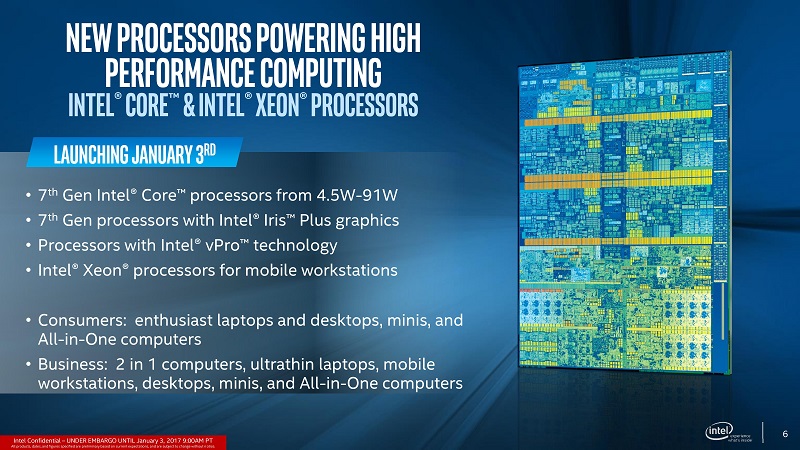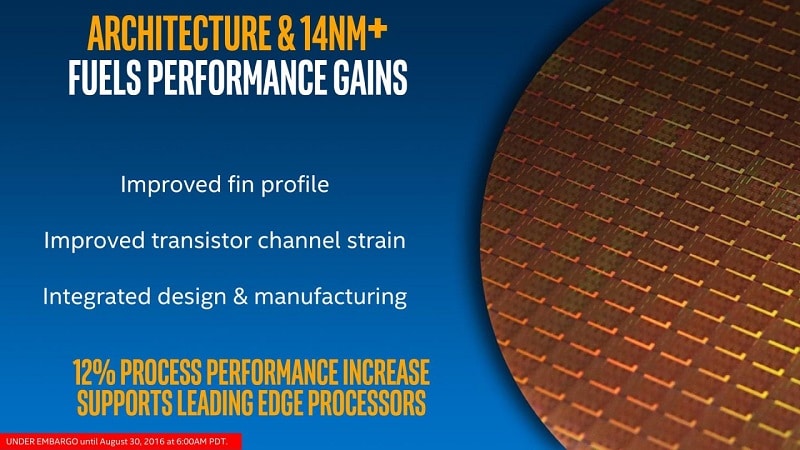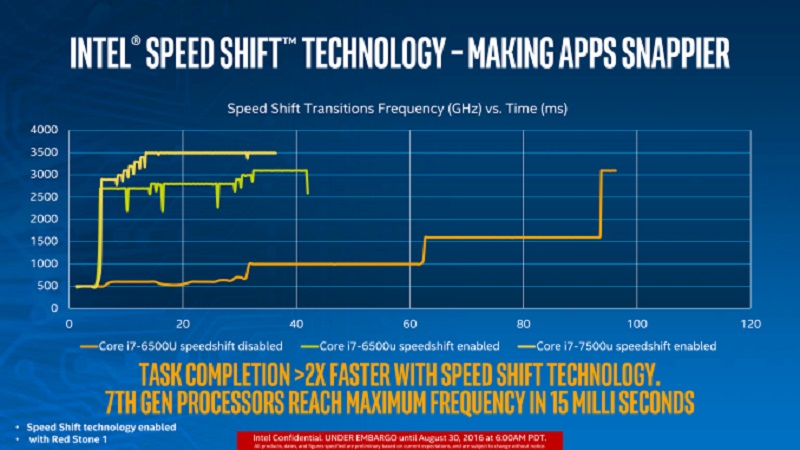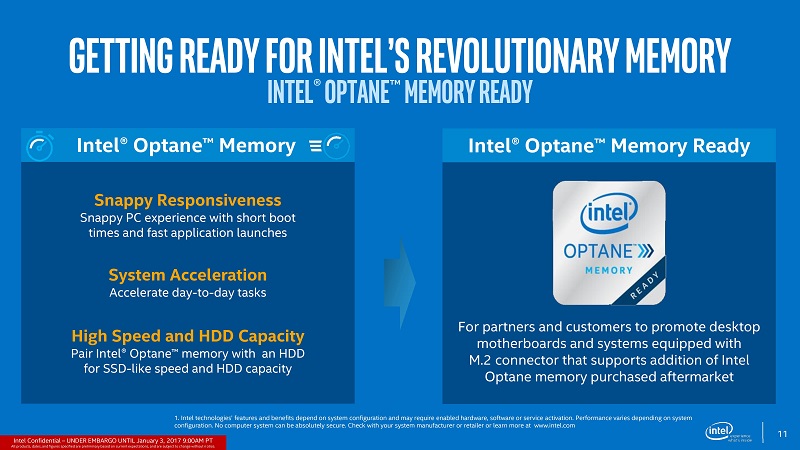Intel Launches 7th Gen Desktop Kaby Lake Processors
Samuel Wan / 8 years ago

Last year, Intel released their new Kaby Lake 7th Generation processors to the masses. Limiting the launch to just mobile oriented SKUs, the chip giant promised that the desktop CPUs would arrive early in 2017. Just days before CES, the time has finally come for Kaby Lake to make its desktop debut. While much of the architecture details have already been revealed with the mobile launch, there is still some new information to share as well as SKU specific specifications.
As the 7th Generation Core series process, Kaby Lake kicks off the new Process, Architecture, Optimization release structure. Being an optimization stage, the change compared to Skylake is largely in the silicon which is the optimized 14nm+ rather than the plain old 14nm. Intel has noted the main change is an improved fin profile. This generally means taller fins and wider pitches which help boost frequency and improves heat dissipation. Intel is being a bit secretive so we don’t know what exactly 14nm+ has done.

On the architecture side, there are only a few minor tweaks. First, we have Speed Shift v2 which gives back more control to the CPU to handle boost states. Compared to Speed Shift, ver 2 is even faster at reaching peak speeds due to new hardware controls. The iGPU also gets an upgrade with support being added for 8b/10b HEVC and VP9 decode and 10b HEVC / 8b VP9 encode. Display output is also enhanced and expanded but the fundamental iGPU architecture is the same as with Skylake, with up to 40% of the die space being used for this purpose.

Next, we have the new Optane Memory which uses 3D XPoint memory in a hard drive cache exclusive mode as well as Optane SSD which is for traditional storage. It remains to be seen what is the benefit of Optane Memory over a NAND cache but it is a Kaby Lake exclusive feature for now. The OPI which is the DMI for SoCs is also upgraded to ver 3 which supports PCIe 3.0. Lastly, we have the new 200 series of chipsets which largely unchanged with the big change being a few more PCIe 3.0 lanes dedicated to storage/integrated peripherals.

In total, Intel is releasing over 25 new SKUs. Of course, the main ones most of you will be concerned with are the i7 7700K and i5 7600K. The 7700K comes in at $339, with a clock speed of 4.2 GHz, and 4.5 GHz Turbo Boost. It has the usual 4 cores with Hyper-Threading, 8MB of L3 cache, 91W TDP, and unlocked multiplier. The 7600K comes in at $242 with a clock speed of 3.8 GHz, and 4.2 GHz Turbo Boost. It has the usual 4 cores, 6MB of L3 cache, 91W TDP, and unlocked multiplier. There are also the usual lower SKUs and many U, Y and H series mobile SKUs.



















